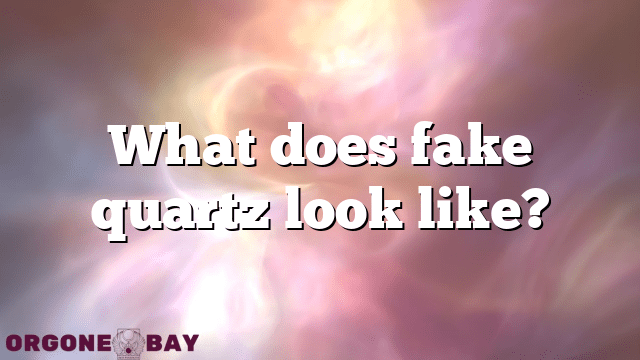Crystal Myths Controversies & Misconceptions
What does fake quartz look like?
Fake clear quartz is an unfortunate reality in the crystal world, and it can be challenging to spot. However, there are several indicators to keep in mind when inspecting your crystal. One of the most significant indicators of fake clear quartz is the presence of air bubbles. Below are some tips on how to identify these bubbles on your crystal:
• Look closely at your crystal clear quartz.
• If you notice tiny spheres that do not move, this is a common characteristic of air bubbles.
• Glass air bubbles are formed differently from how quartz is naturally created on the earth, and thus, their presence indicates that the crystal is not real.
In summary, when inspecting your clear quartz, take a closer look to see if you notice any bubbles. Remember that glass air bubbles will appear as tiny spheres that do not move and are an indicator that your crystal may be fake. Keep these tips in mind, and you will be able to differentiate between real and fake clear quartz.
Table Of Contents
- 1 Understanding the Formation of Clear Quartz vs Glass
- 2 Spotting the Differences: Identifying Real vs Fake Clear Quartz
- 3 The Role of Air Bubbles in Recognizing Fake Clear Quartz
- 4 Visual Inspection: Examining the Clarity of Clear Quartz
- 5 Feeling the Weight: Identifying the Density of Clear Quartz
- 6 Using Light Techniques to Spot Fake Clear Quartz
- 7 Beware of Imitations: Common Practices of Fake Clear Quartz Sellers
Understanding the Formation of Clear Quartz vs Glass
When it comes to identifying fake clear quartz, it’s important to first understand the difference between how natural quartz and glass are formed. Clear quartz is a naturally occurring mineral that is created over an extended period of time as a result of intense pressure and heat deep within the earth’s crust. In contrast, glass is man-made and produced by melting silica, soda ash, and lime together at high temperatures.
Spotting the Differences: Identifying Real vs Fake Clear Quartz
Now that we have a better understanding of the formation process, let’s dive into how to spot the differences between real and fake clear quartz. There are a few key factors to look for when examining quartz crystals including their clarity, weight, and the presence of air bubbles. By paying close attention to these factors, you can better identify whether a crystal is real or fake.
The Role of Air Bubbles in Recognizing Fake Clear Quartz
One of the most significant telltale signs of fake clear quartz is the presence of air bubbles. These air bubbles appear as tiny spheres that do not move and are a result of the method used to create glass. Natural quartz, on the other hand, will have a much lower occurrence of air bubbles due to its formation process. If you notice an abnormal amount of bubbles within your clear quartz, it’s likely that it is fake.
Visual Inspection: Examining the Clarity of Clear Quartz
Another aspect to consider when examining clear quartz is its clarity. Real clear quartz will typically have a high level of transparency and appear clear, while fake quartz may have a dull or cloudy appearance. Additionally, small cracks or inclusions may be visible within real quartz, whereas fake quartz will often have a smoother, more uniform surface.
Feeling the Weight: Identifying the Density of Clear Quartz
Real clear quartz is also notably heavier than fake quartz due to its natural formation and mineral density. If you have two similarly sized crystals and one feels much lighter than the other, it’s likely that the lighter crystal is fake. Another way to test this is by weighing the crystals on a scale- the real crystal is likely to be heavier due to its density.
Using Light Techniques to Spot Fake Clear Quartz
Another helpful technique to use when identifying fake clear quartz is through the use of light. Real quartz will reflect light in a way that creates rainbow-colored prisms and will be visible from various angles. In contrast, fake quartz may not reflect light as brightly or may not create any prisms at all. Holding your crystal up to the light and examining its reflective properties can be an effective way to spot a fake.
Beware of Imitations: Common Practices of Fake Clear Quartz Sellers
Finally, it’s important to be aware of common practices used by fake clear quartz sellers. An imposter may dye a crystal to change its color or use a lower quality material to create a cheaper knockoff. Always purchase from reputable sellers and do your research beforehand to ensure you are getting an authentic crystal. With these tips in mind, you can confidently identify real clear quartz and avoid being fooled by imitations.

